Immune Defense Game Press Kit
(Don’t read this if you want to play the game, eh!)
Contents:
1. Trailer, game description, Basic info on Melanie and Molecular Jig Games
2. Research and the research based design of Immune Defense
3. Art to download
4. Gameplay videos Spoiler alert!
5. Tutorial and Melanie’s notes on the George Fan theory of engagement
6. Melanie speaking about biochemistry and game design
7. Schedule of appearances and Kickstarter
8. What other people have written about us.
Contact Melanie @ MolecularJig.com for more details.
1. Trailer. Watch this first, before you gat all into the learning & science side parts, see the cool fun parts!
Game description
Immune Defense is a strategy game about molecular immunology for big kids and grown ups. In Immune Defense, players use various types of white blood cells to fight of real pathogens, using real surface molecules and signaling molecules. Immune Defense is currently on Kickstarter, looking for your support! The game is mostly finished, it needs some extra effort to get it onto tablets and some iteration of the tutorial and player feedback to make Immune Defense maximally engaging to a broad user base (ages 10+).
The demo (polished up) will always be available to everyone for free. Your support helps us make that possible. You can help get the game out to everyone by spreading the word about our free demo and our Kickstarter.
GAME MECHANISM
Our heroes, the white blood cells called Macrophages and Neutrophils, eat pathogens. These cells are able to track, bind, eat and dissolve pathogens using the proteins and other molecules they carry with them or that they find in their environment. Basically they are talented, well armed and resourceful. They are also very specific they can only do what they are armed for. You can arm them.
The bad guys, the pathogens, are able to avoid the Macrophages and Neutrophils by being difficult to track, bind, eat or dissolve. You can see where this is going, right? yes. Escalation. Escalation all over the place. The proteins and molecules that pathogens carry with them are the key to the pathogens’ success. So this war is quickly revealed to be a war of who has the best equipment: who has the best proteins on board. And who is in the best location, whether the bad guy can resist the hero, or whether the hero is not only in the right place but also has been activated…
In reality, cells and pathogens carry tens of thousands of different proteins. But managing all of those would be a lot of work. So we limited your concerns to just the hero side and then just to three classes of proteins: those that Move the cell, those that do a Job and those that Activate the cell. These three classes of proteins allow the heroes to track (Move), to bind and to eat (Job) and to more quickly dissolve (Activation) the bad guys.
So basically, we have a tower defense game with moving towers, that can be armed in a hundred different ways, and that can activate each other. We fight bad guys that can avoid us, infect us and then destroy us, and can cause damage to the area around us.
QUICK DESCRIPTION
Players use brand new Microbot technology to control cells and molecules. Players deploy Eater cells (Neutrophils) with their LPS receptors (TLR4) to eat E. coli bacteria. Eaters have powerful “Poison Pods” (Phagolysosomes) full of acid and oxidizing molecules that dissolve E. coli bacteria effectively. All is well, until Streptococcus pneumoniae comes along and your LPS receptor no longer works… Your trusty collaborating scientists however, have given you an upgrade, you can now control the Complement Receptor on Eater Cells. And the Complement receptor works, however, it has a lower affinity, so it takes a bit longer to catch those rascally Streptococcus pneumoniae … which is fine, until some Staphylococcus aureus show up. The Staphylococcus aureus take a long time for the Eater cells to dissolve….
General information about Melanie and Molecular Jig Games. (See also www.MolecularJig.com/About)
We are Molecular Jig Games
We are an independent game studio and a double bottom line company. Our goals are to keep ourselves in business and to increase general knowledge of molecular behavior. Molecules like proteins, lipids, drugs and ions are the key to understanding many important concepts: health, the environment, infectious disease, public safety, etc. We will accomplish our goals by creating games that take place in the molecular world and making them available to as wide an audience as possible.
Immune Defense
Immune Defense is a strategy game about molecular immunology for big kids and grown ups. In Immune Defense, players use various types of white blood cells to fight of real pathogens, using real surface molecules and signaling molecules. Immune Defense is currently on Kickstarter, looking for your support! The game is mostly finished, it needs some extra effort to get it onto tablets and some iteration of the tutorial and player feedback to make Immune Defense maximally engaging to a broad user base (ages 10+).
The demo (polished up) will always be available to everyone for free. Your support helps us make that possible. You can help get the game out to everyone by spreading the word about our free demo and our Kickstarter.
Melanie Stegman
Molecular Jig Games is owned by Melanie Stegman, Ph.D., a biochemist, who realized education and outreach to non-scientists would have more of an impact on individual and world health that any particular study she did in the lab.
2. Research and the research based design of Immune Defense.
Melanie spent the last 4 years researching whether a video game that was designed to be an intuitive, immersive experience (not a learning activity nor an explicit test of knowledge, not text based questions to answer, not even any required reading). Could such a game teach molecular biology? Well, a whole new test of the biology taught in the game would be required. Melanie used several methods to test for learning in the game, asking both formal questions about biology as well as asking questions about game objects. Melanie found out that testing for intuitive learning is possible, very useful for game development, and that a complex game mechanic does not deter non-gamers from learning. However, being “easy to play” is important for engaging players, so a good tutorial and clear instructions are important.
Since she was all in for this 4 year endeavor, Melanie also decided to study what kind of an effect a video game like Immune Attack would have on a player’s confidence in their biology skills. Immune Attack is a third person shooter in which player uses WASD and the right mouse button to fly a ship around in true three dimensional space while shooting moving targets. You might imagine that such a game would be intimidating to non-gamer players. You could even imagine that non-gamers might lose confidence in their cell biology skills just because they had such a hard time playing Immune Attack.
Blog post on RESEARCH and DESIGN. RESEARCH PAPER on IMMUNE ATTACK.
Take home summary: the game mechanic can be complex, it doesn’t scare players away from the topic. However, making the game easier to pick up and play can get players to play more and learn more, too.
3. Downloadable art
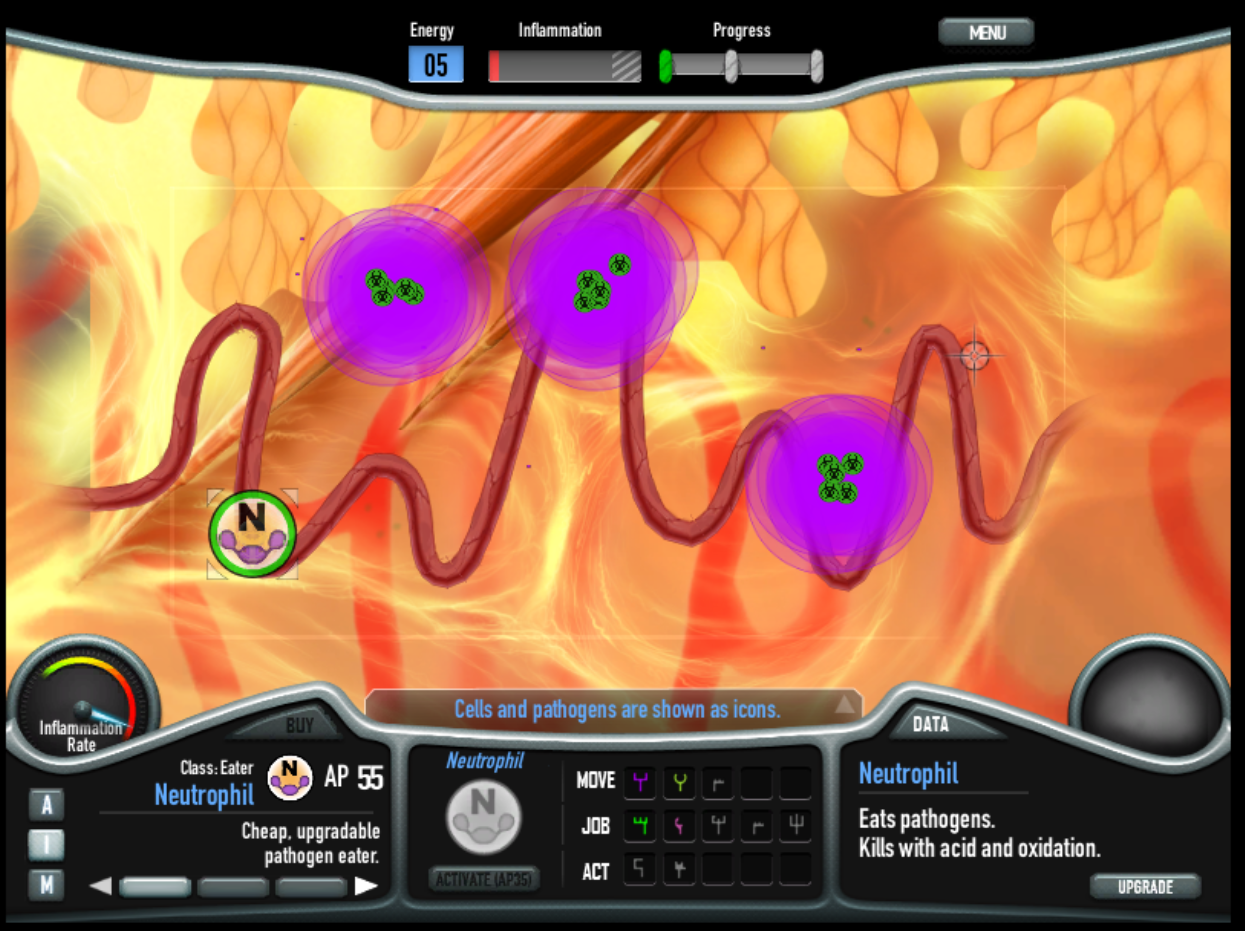
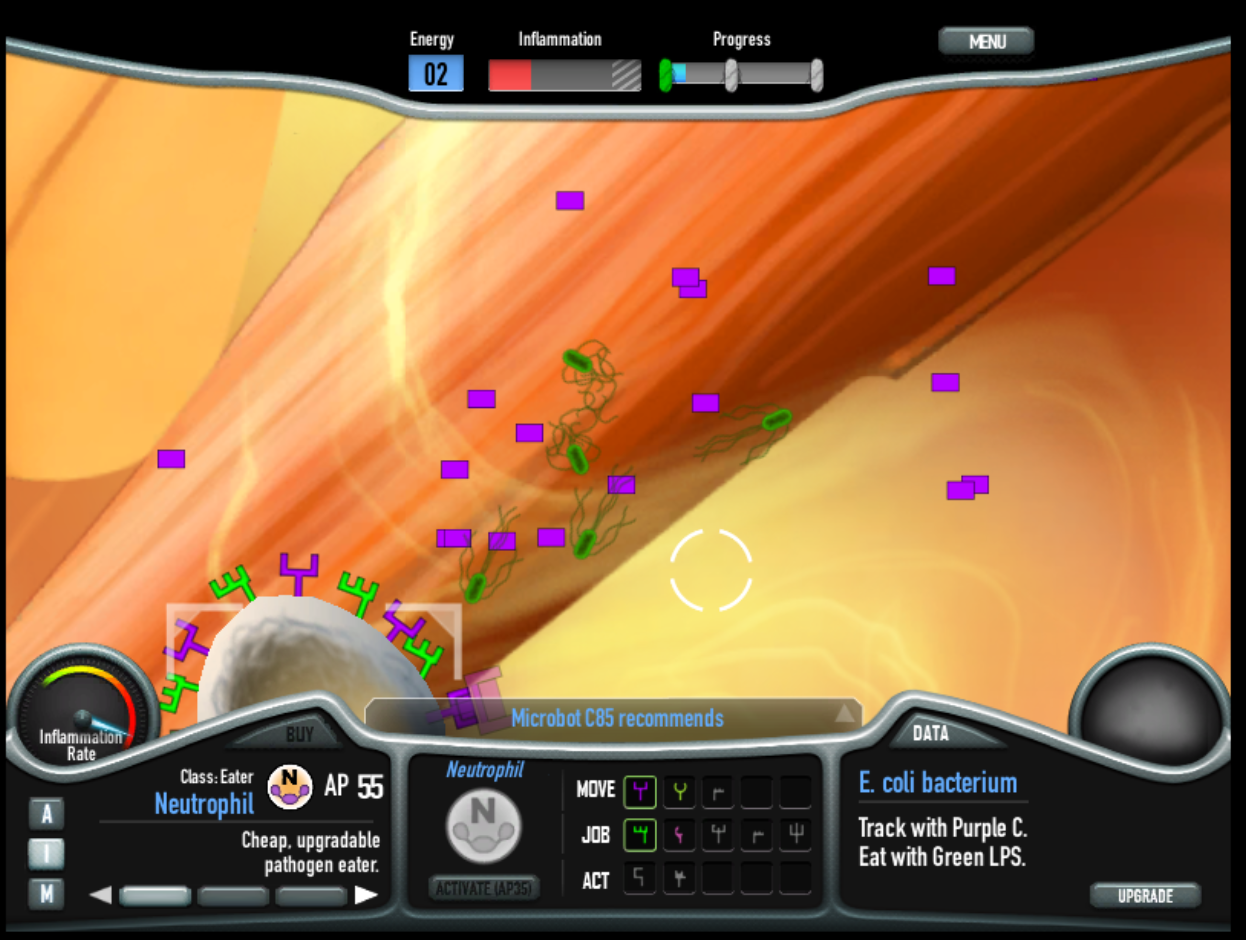
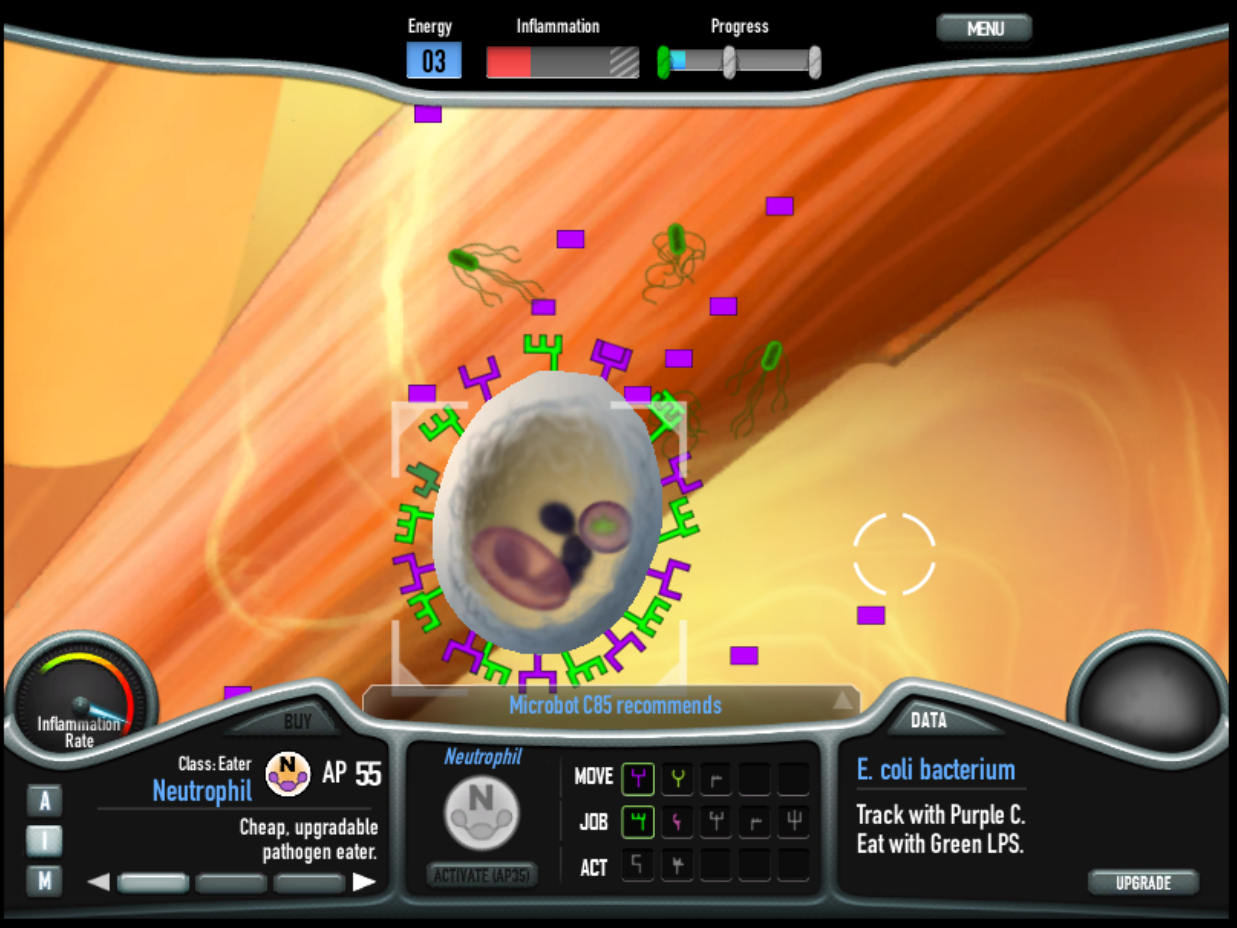
![]()
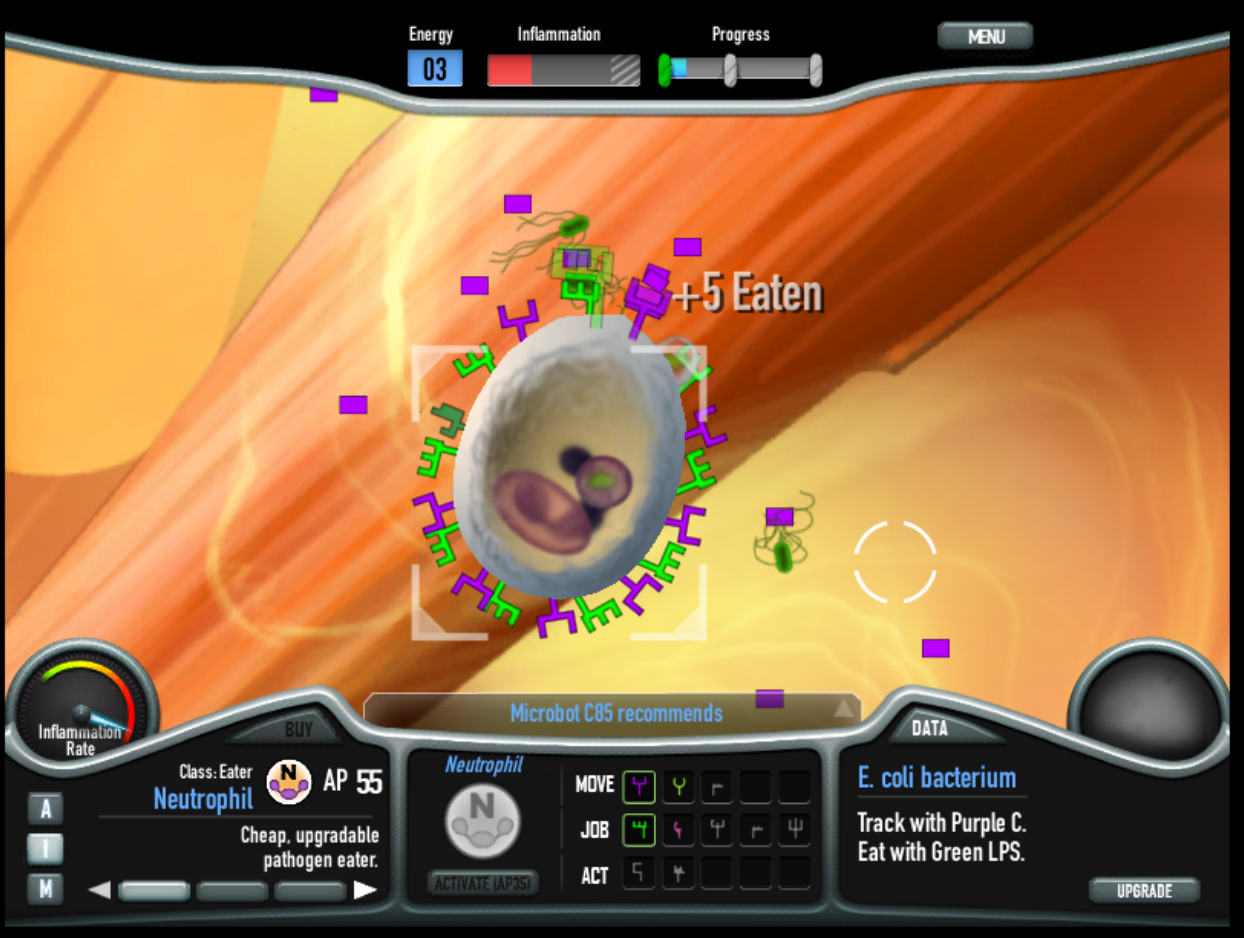
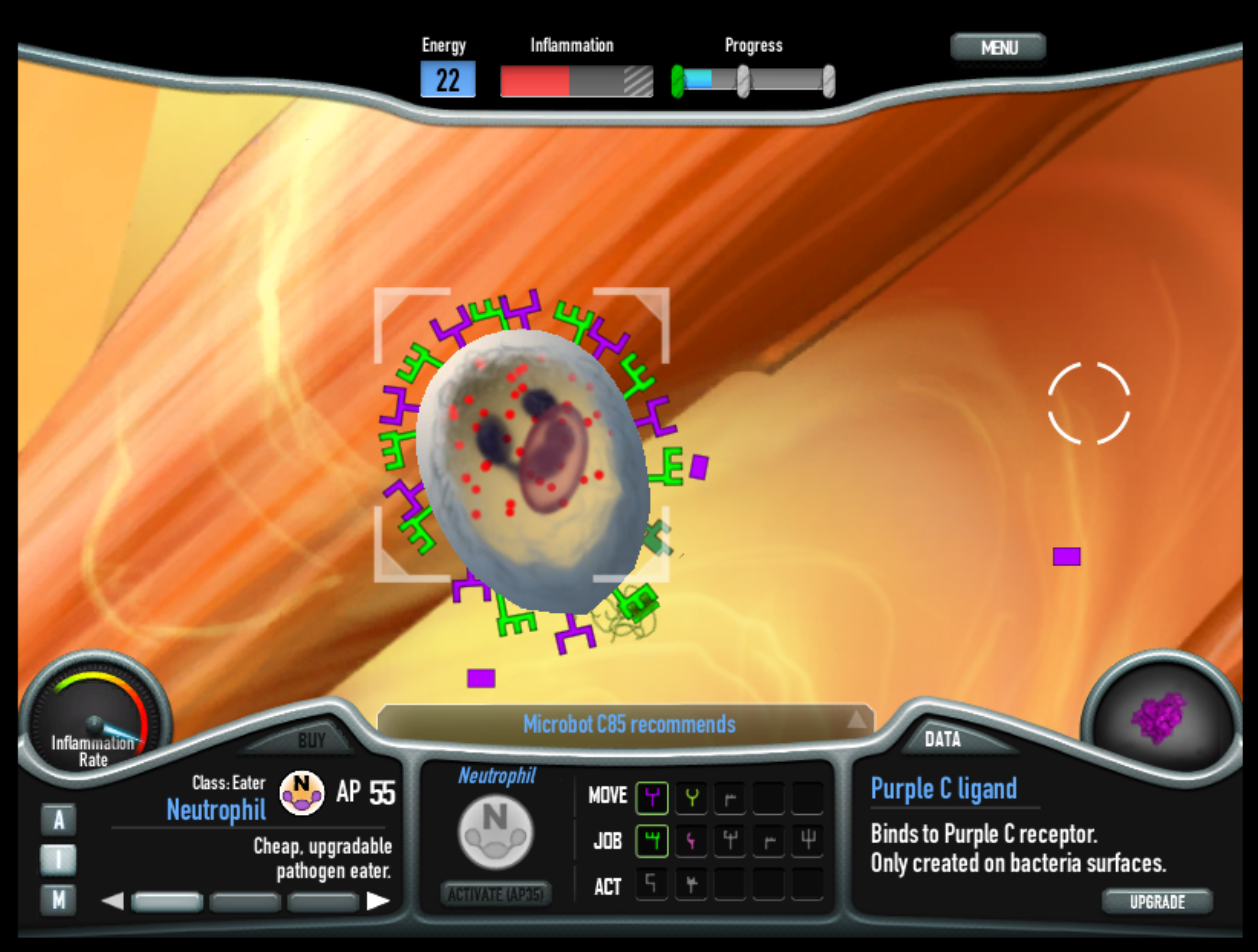
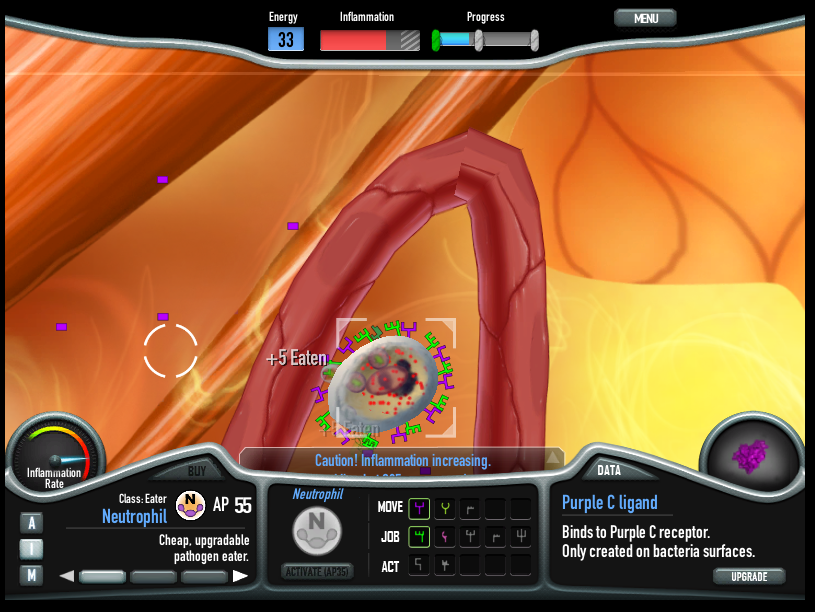
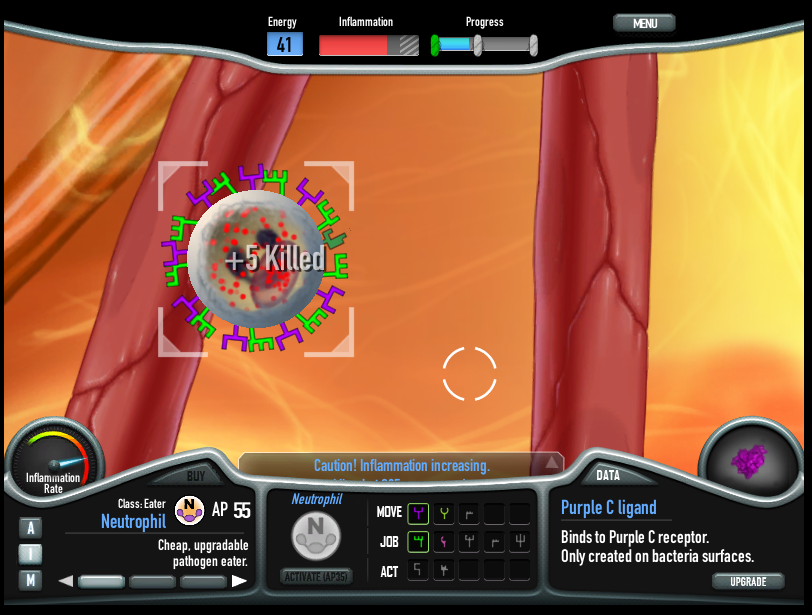
4. Videos of Gameplay: Here is our extended trailer:
Here is an example of random motion of proteins signals and cellular behavior:
5. This level 1 video shows the first part of the tutorial.
I designed the tutorial of Immune Defense to mimic George Fan’s Plants vs. Zombies tutorial.
This video shows the very first level of Immune Defense. I followed George Fan’s advice as closely as possible to build a tutorial that is maximally engages. We know that people who find a game “easy to play” learn more. The game ramps up and becomes much more complex… but here we are introducing the bacterium, the protein signals, the cell and the receptors one by one. This is the part of George Fan’s advice I could not take: Make your game using familiar objects so that their behavior is easy for the new player to imagine: like, use plants and zombies, because their behaviors are intuitive. Like, a pea shooting plant that is actively shooting peas clearly shoots peas and when those peas cause a zombie’s arm to fall off, it is clear that peas damage zombies.
6. Videos of Melanie speaking about Biochemistry and game design. This is the December 2014 meeting of the International Game Developer Association IGDA, in Seattle.
Melanie Slides from this talk
Additionally, see my research page on this website: www.MolecularJig.com/research
7. Schedule:
We launched our Kickstarter and announced our free demo game at the American Society of Cell Biology conference December 7th, 2014.
We will present Immune Defense at the National Institutes for Health on January 20-21, Bethesda, MD
We present Immune Defense at MAGfest Indie Games Showcase on January 24-25th.
Our Kickstarter ends on January 25, at MAGfest.
http://www.molecularjig.com/immune-defense-game/
<iframe width=”560″ height=”315″ src=”//www.youtube.com/embed/wW3Gf16ES9o?rel=0″ frameborder=”0″ allowfullscreen></iframe>
8. What other people have written about us.
July 2014 Binky’s Blog
August 2014 Serious Game Market by Eliane Alhadeff.

